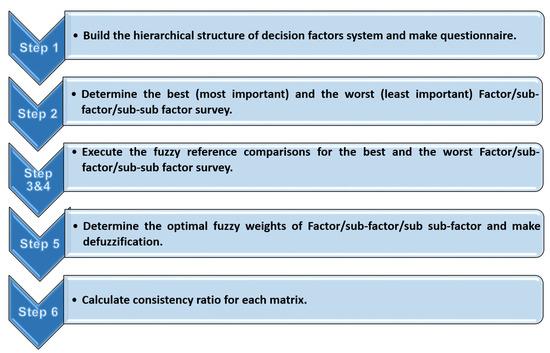A swap, in finance, is an agreement between 2 counterparties to exchange financial instruments or cashflows or payments for a particular time. The instruments can be practically anything however a lot of swaps include cash based upon a notional principal amount. The general swap can also be viewed as a series of forward agreements through which two celebrations exchange monetary instruments, resulting in a common series of exchange dates and 2 streams of instruments, the legs of the swap. The legs can be almost anything but usually one leg includes capital based on a notional principal quantity that both celebrations concur to.
In practice one leg is generally fixed while the other is variable, that is identified by an unsure variable such as a benchmark rate of interest, a foreign exchange rate, an index rate, or a commodity price. Swaps are mainly non-prescription contracts between business or financial organizations (What does ear stand for in finance). Retail financiers do not usually engage in swaps. A home loan holder is paying a drifting interest rate on their mortgage but anticipates this rate to increase in the future. Another home mortgage holder is paying a set rate but anticipates rates to fall in the future. They go into a fixed-for-floating swap agreement. Both home loan holders concur on a notional principal quantity and maturity date and consent to take on each other's payment obligations.
By utilizing a swap, both celebrations successfully altered their mortgage terms to their favored interest mode while neither party needed to renegotiate terms with their mortgage lenders. Thinking about the next payment only, both parties might as well have gone into a fixed-for-floating forward agreement. For the payment after that another forward contract whose terms are the very same, i. e. same notional quantity and fixed-for-floating, and so on. The swap agreement therefore, can be seen as a series of forward agreements. In the end there are two streams of money streams, one from the celebration who is always paying a set interest on the notional amount, the set leg of the swap, the other from the party who consented to pay the drifting rate, the floating leg.
Swaps were initially presented to the public in 1981 when IBM and the World Bank gotten in into a swap arrangement. Today, swaps are amongst the most heavily traded monetary contracts in the world: the total quantity of rates of interest and currency swaps impressive was more than $348 trillion in 2010, according to Bank for International Settlements (BIS). The majority of swaps are traded non-prescription( OTC), "tailor-made" for the counterparties. The Dodd-Frank Act in 2010, nevertheless, envisions a multilateral platform for swap quoting, the swaps execution center (SEF), and requireds that swaps be reported to and cleared through exchanges or clearing houses which subsequently resulted in the formation of swap data repositories (SDRs), a main center for swap data reporting and recordkeeping.
futures market, and the Chicago Board Options Exchange, registered to end up being SDRs. They began to list some kinds of swaps, swaptions and swap futures on their platforms. Other exchanges followed, such as the Intercontinental, Exchange and Frankfurt-based Eurex AG. According to the 2018 SEF Market Share Stats Bloomberg dominates the credit rate market with 80% share, TP controls the FX dealer to dealer market (46% share), Reuters controls the FX dealer to customer market (50% share), Tradeweb is strongest in how to get rid of time share the vanilla rates of interest market (38% share), TP the greatest platform in the basis swap market (53% share), BGC dominates both the swaption and XCS markets, Tradition is the biggest platform for Caps and Floorings (55% share).


At the end of 2006, this was USD 415. 2 trillion, more than 8. 5 times the 2006 gross world product. However, considering that the cash circulation generated by a swap amounts to a rates of interest times that notional quantity, the money flow generated from swaps is a substantial portion of but much less than the gross world productwhich is also a cash-flow measure. The bulk of this (USD 292. 0 trillion) was due to rates of interest swaps. These split by currency as: Source: BIS Semiannual OTC derivatives stats at end-December 2019 Currency Notional outstanding (in USD trillion) End 2000 End 2001 End 2002 End 2003 End 2004 End 2005 End 2006 16.
9 31. 5 44. 7 59. 3 81. 4 112. 1 13. 0 18. 9 23. 7 33. 4 44. 8 74. 4 97. 6 11. 1 10. 1 12. 8 17. 4 21. 5 25. 6 38. 0 4. 0 5. 0 6. 2 7. 9 11. 6 15. 1 22. 3 1. 1 1. 2 1. 5 2. 0 2. 7 3. 3 3. 5 Source: "The International OTC Derivatives Market at end-December 2004", BIS, , "OTC Derivatives Market Activity in the 2nd Half of 2006", BIS, A Major Swap Participant (MSP, or sometimes Swap Bank) is a generic term to describe a monetary institution that assists in swaps in between counterparties.
Unknown Facts About How To Import Stock Prices Into Excel From Yahoo Finance
A swap bank can be an international business bank, an investment bank, a merchant bank, or an independent operator. A swap bank works as either a swap broker or swap dealer. As a broker, the swap bank matches counterparties but does not assume any risk of the swap. The swap broker gets a commission for this service. Today, the majority of swap banks serve as dealers or market makers. As a market maker, a swap bank wants to accept either side of a currency swap, and then later on on-sell it, or match it with a counterparty. In mcdowell and walker sidney this capability, the swap bank presumes a position in the swap and for that reason assumes some risks.
The 2 primary factors for a counterparty to utilize a currency swap are to acquire financial obligation funding in the swapped currency at an interest cost reduction caused through relative benefits each counterparty has in its national capital market, and/or the advantage of hedging long-run exchange rate exposure. These factors appear uncomplicated and difficult to argue with, especially to the degree that name acknowledgment is really crucial in raising funds in the international bond market. Firms utilizing currency swaps have statistically higher levels of long-term foreign-denominated financial obligation than companies that use no currency derivatives. Conversely, the main users of currency swaps are non-financial, international companies with long-lasting foreign-currency funding requirements.
Financing foreign-currency financial obligation using domestic currency and a currency swap is therefore superior to financing directly with foreign-currency debt. The 2 main reasons for swapping rate of interest are to better match maturities of possessions and liabilities and/or to get a cost savings through the quality spread differential (QSD). Empirical proof suggests that the spread between AAA-rated commercial paper (drifting) and A-rated commercial is somewhat less than the spread between AAA-rated five-year commitment (fixed) and an A-rated commitment of the exact same tenor. These findings recommend that firms with lower (higher) credit rankings are more likely to pay fixed (floating) in swaps, and fixed-rate payers would use more short-term debt and have much shorter financial obligation maturity than floating-rate payers.